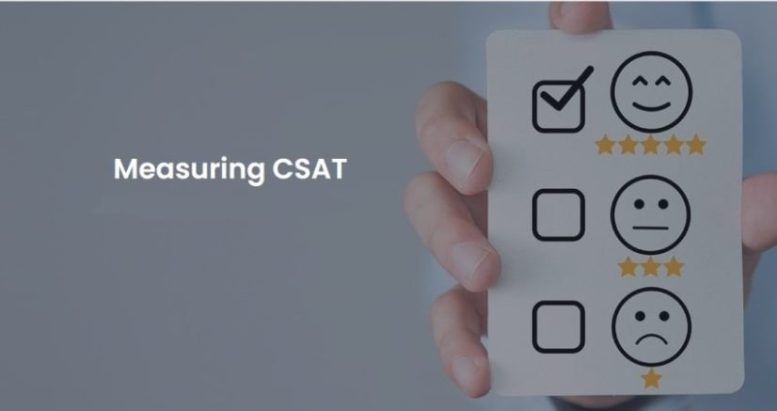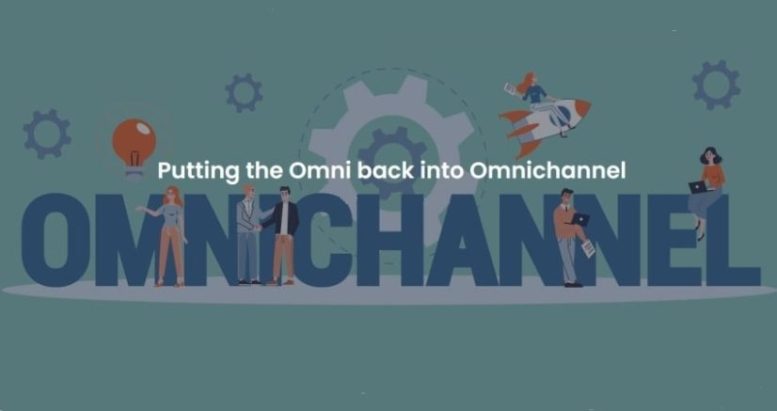The many faces of Customer Satisfaction (CSAT) in the contact centre – Omningage
Customer Satisfaction (CSAT) is one of the most talked-about KPIs in contact centres. It’s also a broader concept.
In this book, “Your call is important to us”, Boris Najafov mentions that at least 3 KPIs are considered to be CSAT measurements.
The first is First Contact Resolution (FCR). Internally measuring FCR by getting contact centre agents to indicate that a case is “solved” with a wrap up code, is not considered reliable. Agents and customers have different ideas of what “solved” means.
Najafov considers automated measurements, such as calls from the same number happening within a certain time frame to be equally unreliable. Customers may call back within this interval for other reasons.
He recommends using surveys to ask customers if their issues were resolved.
Measuring customers’ perceptions of whether their problems were solved may, or may not be technically correct, but as Brian Shore, the CEO of ZOOM International says, “The customer may not always be right, but she will always be emotionally right”.
Najafov then discusses the classic CSAT measurement, where customers are asked to give a score indicating how happy they are with the service that they have received.
Dawes, J. Stocchi, L., Dall’Olmo-Riley, F. criticized this in a research paper entitled “Over-time Variation in Customer Satisfaction Scores”, in the International Journal of Market Research, March 2020.
When they surveyed customers immediately after a key event, and then surveyed them again sometime later, their scores changed. Customers initially giving low scores, gave higher scores closer to the average. Customers initially giving higher scores, gave lower scores closer to the average.
The classic CSAT score seems to be little more than a measurement of an immediate reaction.
The final measurement he mentions is Net Promoter Score (NPS). This is pretty similar to the classic CSAT measurement. The customer provides a numerical score after a specific event or interaction.
The difference is that the customer is asked “How likely are you to recommend this product to your colleagues, friends or relatives?”.
This is seen as a better measure of customer satisfaction. Customers are asked about recommending the product or service to other people. The reasoning is that customers will not want to lose face by recommending a poor product to their colleagues and friends, so their answers will give us a better insight into their thinking.
In addition, the aggregation is not done by taking a straight average of the scores. The overall score is calculated as the percentage of respondents giving a 9 or 10 score, minus the percentage of respondents giving a score of 6 or below. The effect of this is to remove the “fence sitters” from the equation.
While NPS has become very popular in the business community for its ease of use, studies indicate that there is little statistical difference in reliability, validity or discriminating power between NPS and other CSAT measures. (Preston, Carolyn C.; Colman, Andrew M. (14 September 1999). “Optimal number of response categories in rating scales: reliability, validity, discriminating power, and respondent preferences”. Acta Psychologica. 104: 1–15.)
 How do contact centres use CSAT scores?
How do contact centres use CSAT scores?
The Contact Centre Helper report of 2019 “What are contact centres doing right now?” revealed that 46% of contact centre professionals use a combination of measures to measure customer satisfaction, 39% used NPS, 38% used the percentage of satisfied customers, 20% used FCR and 18% measured CSAT by the number of complaints.
Most contact centres use aggregated CSAT scores to gain an impression of what customers think about the services they offer. They are specifically interested in their customers’ reactions to the calls they have just experienced, so the immediacy of the measurement is not an issue.
Some organizations will automatically send CSAT scores to senior executives to contact their customers immediately if they give them a low score. It’s not hard to imagine a process where the contact details of clients who gave a low CSAT score are routed to an outbound customer retention team. They make follow up calls to the customer to investigate and solve the issue. This might reduce customer churn and reinforce the company’s reputation for customer care.
CSAT scores can give a valuable reality check to the Quality Management (QM) function. While an internal QM form will be longer and more complex than a typical one-question survey, there should be a correlation between the two sets of results. If a customer gives a call a low score, then it would be logical to expect that call to get a low QM score too.
CSAT scores for specific queues, teams or agents can be analyzed to identify areas or individuals which may be consistently causing dissatisfaction. This may reveal areas for improvement in processes, staff training or even the product itself.
 CSAT scores and Omningage
CSAT scores and Omningage
Omningage provides fully featured contact centre interfaces to run on top of the Amazon Connect. This includes an agent desktop, supervisor desktop and a reporting platform.
Omningage also provides the functionality to conduct post contact surveys for all channels. By default, it is configured to collect NPS data from customers, but it can be configured to collect other CSAT data.
This survey data is directly associated with the relevant interactions. The survey results are displayed in the Interaction Explorer to allow supervisors to investigate low scores quickly and effectively. The results are included in the reports available in Omningage IQ, allowing users to analyze the data to reveal the correlations that might exist between CSAT or NPS scores and wrap up codes, tags or call lengths.
Many companies are looking beyond CSAT surveys where customers manually input their responses. Instead, they are considering sentiment analysis conducted automatically by solutions such as AWS Contact Lens or AWS Comprehend. These solutions can be integrated with Amazon Connect to compliment the functionality already offered by Omningage.
The wrap up
CSAT is the contact centre’s window to the world. The Omningage / Amazon Connect combination can support both traditional survey-based CSAT collection methods and automated technologies that provide sentiment analysis for both voice and text-based interactions.

 How do contact centres use CSAT scores?
How do contact centres use CSAT scores?




